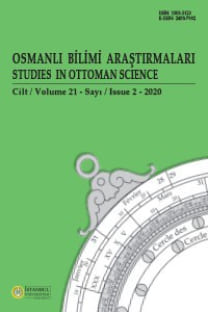Ophtalmoscope Essad
Dr. Esat Işık (1865-1936) graduated from the Military Medical Academy in Istanbul in 1889. He specialised in ophthalmology in France, working with professors Photinos Panas at Hôtel-Dieu, and Félix Despagnet at the Faculty of Medicine in Paris. His contemporaries in ophthalmological training included Drs. Constantinos Tahinzis, Alexios Trantas, and Ananias Gabrielidès, who were to hold key positions in Istanbul after the 1890s. Lt. Nicolaki Vassiladès, an Ottoman military physician, was another Panas resident and a contemporary of Dr. Esat Işık In the course of his training, in 1893 Esat Işık developed an simple ophthalmoscope which came to be known as the ‘Ophtalmoscope Essad’ or Dr. Essad’s Ophthalmoscope. This is a simple (reflecting) ophthalmoscope with a pair of plane and concave pierced mirrors mounted back to back on a springed frame allowing for rotation, both for ophthalmoscopy and sciascopy. The Essad Ophthalmoscope has gained wide popularity for its convenience, and still remains in use. The original model of the Essad Ophthalmoscope was commissioned to the Maison L.Giroux in Paris, and has mirrors of 39 mm diameter with a central circular aperture of measuring 5 mm. The brass frame has a foldable handle. There is a modified version with slightly larger mirrors (44 mm) and a smaller sight-hole (3 mm), which has been reproduced by various manufacturers in Europe. In another Essad model (from the A. Schett collection) a hinged clip has been added to the back plate for application of a corrective lens, similar to the Liebreich ophthalmoscope. Esat Işık returned to Istanbul in 1894, to be appointed professor in 1899; he established a separate ophthalmological clinic at the Gülhane Military Medical Faculty. Dr. Esat Bey was nominated as Deputy Minister of Health in 1912, and was instrumental in the organisation of a number of political societies in the final decade of the Ottoman Empire. Professor Esat Işık served in the Medical Faculty of Istanbul till 1933. He is remembered for his many personal qualities, along side his ophthalmoscope.
Anahtar Kelimeler:
Esat Işık, Esat Oftalmoskopu, göz hastalıkları, tıp tarihi, Fotinos Panas, Türkiye
The Essad Ophthalmoscope
Dr. Esat Işık (1865-1936) graduated from the Military Medical Academy in Istanbul in 1889. He specialised in ophthalmology in France, working with professors Photinos Panas at Hôtel-Dieu, and Félix Despagnet at the Faculty of Medicine in Paris. His contemporaries in ophthalmological training included Drs. Constantinos Tahinzis, Alexios Trantas, and Ananias Gabrielidès, who were to hold key positions in Istanbul after the 1890s. Lt. Nicolaki Vassiladès, an Ottoman military physician, was another Panas resident and a contemporary of Dr. Esat Işık In the course of his training, in 1893 Esat Işık developed an simple ophthalmoscope which came to be known as the ‘Ophtalmoscope Essad’ or Dr. Essad’s Ophthalmoscope. This is a simple (reflecting) ophthalmoscope with a pair of plane and concave pierced mirrors mounted back to back on a springed frame allowing for rotation, both for ophthalmoscopy and sciascopy. The Essad Ophthalmoscope has gained wide popularity for its convenience, and still remains in use. The original model of the Essad Ophthalmoscope was commissioned to the Maison L.Giroux in Paris, and has mirrors of 39 mm diameter with a central circular aperture of measuring 5 mm. The brass frame has a foldable handle. There is a modified version with slightly larger mirrors (44 mm) and a smaller sight-hole (3 mm), which has been reproduced by various manufacturers in Europe. In another Essad model (from the A. Schett collection) a hinged clip has been added to the back plate for application of a corrective lens, similar to the Liebreich ophthalmoscope. Esat Işık returned to Istanbul in 1894, to be appointed professor in 1899; he established a separate ophthalmological clinic at the Gülhane Military Medical Faculty. Dr. Esat Bey was nominated as Deputy Minister of Health in 1912, and was instrumental in the organisation of a number of political societies in the final decade of the Ottoman Empire. Professor Esat Işık served in the Medical Faculty of Istanbul till 1933. He is remembered for his many personal qualities, along side his ophthalmoscope.
Keywords:
Esat Işık, Essad Ophthalmoscope, ophthalmology, history of medicine, Photinos Panas, Turkey,
___
- -
- ISSN: 1303-3123
- Yayın Aralığı: Yılda 2 Sayı
- Başlangıç: 1995
- Yayıncı: İstanbul Üniversitesi Edebiyat Fakültesi
Sayıdaki Diğer Makaleler
Deneylerle Elektriği Tanıtan Bir Türkçe Eser: Yahya Naci Efendi’nin Risale-i Seyyale-i Berkiyye’si
Ankara Yüksek Ziraat Enstitüsü’nde Mülteci Bilim Adamları
Osmanlı Teknoloji Tarihinden Bir Kesit: Gemi İndirme Yöntemleri
Astronomik Düzenlilikten Sosyo-Matematik Uylaşıma Takvim
Anadolu Kültüründe Kilit (Doğu Ve Güneydoğu Anadolu Örnekleri)
Semra SARAÇOĞLU, Bülent KARAKAŞ
Tersâne Hendesehânesi’nden Bahriye Mektebi’ne Mühendishâne-İ Bahrî-İ Hümâyûn
Hofrat Prof.Carl Haussknecht'in (1838-1903) Türkiye bitkileri koleksiyonu
